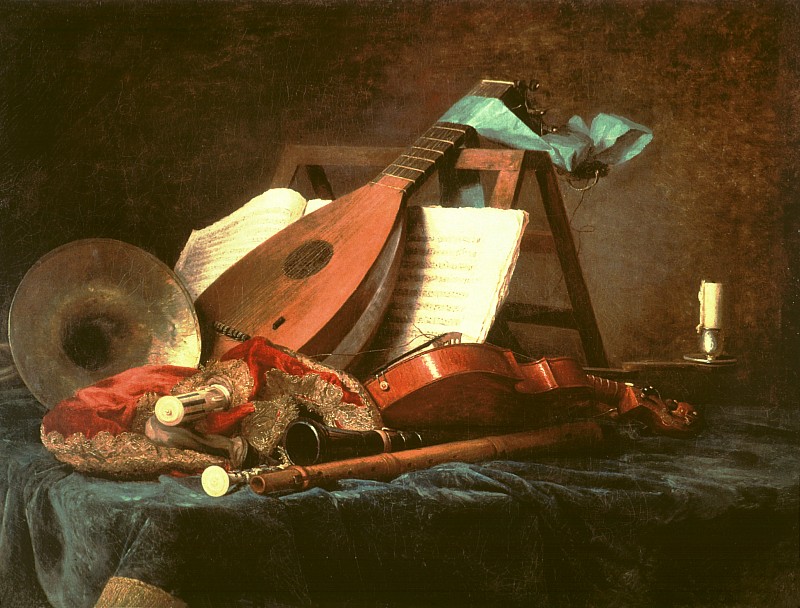|
Lithophone
A lithophone is a musical instrument consisting of a rock or pieces of rock which are struck to produce musical notes. Notes may be sounded in combination (producing harmony) or in succession (melody). It is an idiophone comparable to instruments such as the glockenspiel, vibraphone, xylophone and marimba. In the Hornbostel-Sachs classification system, lithophones are designated as '111.22' – directly-struck percussion plaques. Notable examples A rudimentary form of lithophone is the "rock gong", usually a natural rock formation opportunistically adapted to produce musical tones, such as that on Mfangano Island, in Lake Victoria, Kenya. The Great Stalacpipe Organ of Luray Caverns, Virginia, USA uses 37 stalactites to produce the Western scale. Other stalactite lithophones are at Tenkasi in South India, and at Ringing Rocks Park in Pennsylvania. An example that is no longer used is at Cave of the Winds, in Colorado Springs. The Txalaparta (or Chalaparta), a traditi ... [...More Info...] [...Related Items...] OR: [Wikipedia] [Google] [Baidu] |
Musical Stones Of Skiddaw
The Musical Stones of Skiddaw are a number of lithophones built across two centuries around the town of Keswick, northern England, using hornfels, a stone from the nearby Skiddaw mountain, which is said to have a superior tone and longer ring than the more commonly used slate. The first documented lithophone from Keswick was built in 1785 by Peter Crosthwaite, an eccentric inventor who became interested in the musical properties of the local stone. However, this kind of instrument became widely known only decades later, when in 1840 Joseph Richardson, a local stonemason and self-taught musician, built a larger, eight-octave lithophone with which he and his sons toured the UK and Europe giving numerous concerts, including one in London for Queen Victoria. Richardson's lithophone initially featured 61 tuned and shaped hornfels rocks. It was later enhanced with steel bars, Swiss bells and various other percussions, and survives to this day, being on display at the Keswick Museum and ... [...More Info...] [...Related Items...] OR: [Wikipedia] [Google] [Baidu] |
─Ĺ├án ─Ĺ├í
The ''─Ĺ├án ─Ĺ├í'' is a lithophone played by ethnic minority groups in the Central Highlands of Vietnam, in the provinces of L├óm ─Éß╗ông, ─Éß║»k N├┤ng, ─Éß║»k Lß║»k, Gia Lai, and Kon Tum. These provinces are also home of the space of Gong culture listed in UNESCO's World Heritage Site. The word ''─Ĺ├í'' means "stone" in Vietnamese, ─Ĺ├án is instrument. The term ─Ĺ├án ─Ĺ├í is of recent origin among Vietnamese musicologists, it had also been referred to as a ─Ĺ├án goong, a Vietnamese gong. Several stones of different sizes are placed in a row. The player then uses a stick to knock the stones, each of which produces a different tone. The stone music sounds like the rhythm of the streams and bird songs, and therefore goes well with the surrounding landscape. One of the oldest stone musical instruments ever discovered was found in this area, dating back more than 2,000 years ago. It is also played by Viet people The Vietnamese people ( vi, ngĂ░ß╗Łi Viß╗çt, lit=Viet people) ... [...More Info...] [...Related Items...] OR: [Wikipedia] [Google] [Baidu] |
Great Stalacpipe Organ
The Great Stalacpipe Organ is an electrically actuated lithophone located in Luray Caverns, Virginia, USA. Covering 3.5 acres of the cavern, it is considered the world's largest instrument by Guinness World Records. It is operated by a custom console that produces the tapping of ancient stalactites of varying sizes with solenoid-actuated rubber mallets in order to produce tones. The instrument's name was derived from the resemblance of the selected thirty-seven naturally formed stalactites to the pipework of a traditional pipe organ along with its custom organ-style keyboard console. It was designed and implemented in 1956 over three years by Leland W. Sprinkle inside the Luray Caverns near Shenandoah National Park in Virginia, USA. History Two accounts of Sprinkle's conception of the instrument are known. From the discovery of Luray Caverns in 1878 onward, the favorable attributes of the formations for creating musical tones were well known. One of the earliest references ... [...More Info...] [...Related Items...] OR: [Wikipedia] [Google] [Baidu] |
Sankarjang
Sankarjang (20┬░52ÔÇÖ08ÔÇťN; 84┬░59ÔÇÖ19ÔÇťE), Odisha, India is an archaeological site near Angul, a former cemetery and settlement with large, worked stones but no one knows what they were made for, although some people think they might have been part of a lithophone . This site was test excavated by the State Archaeology Department of Odisha after a chance find of 20 long unfinished chipped and ground, lithic bars and axes of basalt, together with human skeletal remains and metallic artifacts, by a shepherd in 1971. Archaeologists understood ground stone lithics to be typical of the Neolithic Period although they were in production later. The elegant lithics from Sankarjang resemble elaborate ones from eastern Asia and the South Seas. Such lithics played a key role in the definition of R. von Heine-GeldernÔÇÖs Austronesian peoples, Austronesian culture. The incisor teeth of nine bodies interred in the graves had a "shovel" form which suggests Mongolian affinities. The absolute ... [...More Info...] [...Related Items...] OR: [Wikipedia] [Google] [Baidu] |
Musical Instrument
A musical instrument is a device created or adapted to make musical sounds. In principle, any object that produces sound can be considered a musical instrumentÔÇöit is through purpose that the object becomes a musical instrument. A person who plays a musical instrument is known as an instrumentalist. The history of musical instruments dates to the beginnings of human culture. Early musical instruments may have been used for rituals, such as a horn to signal success on the hunt, or a drum in a religious ceremony. Cultures eventually developed composition and performance of melodies for entertainment. Musical instruments evolved in step with changing applications and technologies. The date and origin of the first device considered a musical instrument is disputed. The oldest object that some scholars refer to as a musical instrument, a simple flute, dates back as far as 50,000 - 60,000 years. Some consensus dates early flutes to about 40,000 years ago. However, most historians ... [...More Info...] [...Related Items...] OR: [Wikipedia] [Google] [Baidu] |
Luray Caverns
Luray Caverns, originally called Luray Cave, is a cave just west of Luray, Virginia, United States, which has drawn many visitors since its discovery in 1878. The cavern system is generously adorned with speleothems such as columns, mud flows, stalactites, stalagmites, flowstone, and mirrored pools. The caverns are perhaps best known for the Great Stalacpipe Organ, a lithophone made from solenoid-fired strikers that tap stalactites of various sizes to produce tones similar to those of xylophones, tuning forks, or bells. A Smithsonian Institution report of July 13 and 14, 1880, concluded: " is safe to say that there is probably no other cave in the world more completely and profusely decorated with stalactite and stalagmite ornamentation than that of Luray." Description Visitors enter the cave via a path that curves downward through the caverns, eventually reaching Dream Lake, The Saracen's Tent, The Great Stalacpipe Organ and some large stalactites and stalagmites. The ... [...More Info...] [...Related Items...] OR: [Wikipedia] [Google] [Baidu] |
Rock Gong
A rock gong is a slab of rock that is hit like a drum, and is an example of a lithophone. Examples have been found in Africa, Asia, and Europe. Regional names for the rock gong include ''kungering'', ''kwerent dutse'', ''gwangalan'', ''kungereng'', ''kongworian'', and ''kuge''. These names are all onomatopœic, except for "kuge" which is the Hausa word for a double iron bell and "dawal" which is the Ge`ez word for a church's stone gong. History Rock gongs have been found in various African locations, such as sites in Burkina Faso, Niger, Nigeria, Sudan, Tanzania in Siuyu and Ughaugha, also in Serengeti (see Itambu, et al. 2018), Uganda, and Zambia. The Kupgal petroglyph site in India, which was originally discovered in 1892 (though lost and rediscovered in the 21st century), includes a large number of rock gongs alongside rock art. The site dates to the Neolithic period. Rock gongs were brought to the attention of the anthropological community in 1956 by archaeologist Be ... [...More Info...] [...Related Items...] OR: [Wikipedia] [Google] [Baidu] |
Xylophone
The xylophone (; ) is a musical instrument in the percussion family that consists of wooden bars struck by mallets. Like the glockenspiel (which uses metal bars), the xylophone essentially consists of a set of tuned wooden keys arranged in the fashion of the keyboard of a piano. Each bar is an idiophone tuned to a pitch of a musical scale, whether pentatonic or heptatonic in the case of many African and Asian instruments, diatonic in many western children's instruments, or chromatic for orchestral use. The term ''xylophone'' may be used generally, to include all such instruments such as the marimba, balafon and even the semantron. However, in the orchestra, the term ''xylophone'' refers specifically to a chromatic instrument of somewhat higher pitch range and drier timbre than the marimba, and these two instruments should not be confused. A person who plays the xylophone is known as a ''xylophonist'' or simply a ''xylophone player''. The term is also popularly used to ... [...More Info...] [...Related Items...] OR: [Wikipedia] [Google] [Baidu] |
Cambridge University Press
Cambridge University Press is the university press of the University of Cambridge. Granted letters patent by Henry VIII of England, King Henry VIII in 1534, it is the oldest university press in the world. It is also the King's Printer. Cambridge University Press is a department of the University of Cambridge and is both an academic and educational publisher. It became part of Cambridge University Press & Assessment, following a merger with Cambridge Assessment in 2021. With a global sales presence, publishing hubs, and offices in more than 40 Country, countries, it publishes over 50,000 titles by authors from over 100 countries. Its publishing includes more than 380 academic journals, monographs, reference works, school and university textbooks, and English language teaching and learning publications. It also publishes Bibles, runs a bookshop in Cambridge, sells through Amazon, and has a conference venues business in Cambridge at the Pitt Building and the Sir Geoffrey Cass Spo ... [...More Info...] [...Related Items...] OR: [Wikipedia] [Google] [Baidu] |
Cave Of The Winds (Colorado)
Cave of the Winds is a cave in the Pikes Peak region of Colorado. It is located just west of Colorado Springs on U.S. Highway 24, near the Manitou Cliff Dwellings. Tours of the complex of caves are given daily. Cave features By far the most famous section of the Cave of the Winds is the Silent Splendor room. Discovered in 1984, the room contains numerous rare crystalline speleothems including helectites which appear to defy the laws of gravity by growing in strange directions and not being forced down by gravity like many cave formations. Unfortunately, the room must be sealed off from the general public in order to maintain its delicate environment. Silent Splendor is sealed from public view by an "environmental gate" with a large tube that seals in moisture to maintain the atmosphere necessary for the delicate formations to continue to grow. In the late 1980s a few new passages were opened inside the cavern. On May 8, 1988, Mother's Day, a chamber called the "Adventure R ... [...More Info...] [...Related Items...] OR: [Wikipedia] [Google] [Baidu] |
Odisha
Odisha (English: , ), formerly Orissa ( the official name until 2011), is an Indian state located in Eastern India. It is the 8th largest state by area, and the 11th largest by population. The state has the third largest population of Scheduled Tribes in India. It neighbours the states of Jharkhand and West Bengal to the north, Chhattisgarh to the west, and Andhra Pradesh to the south. Odisha has a coastline of along the Bay of Bengal in Indian Ocean. The region is also known as Utkala and is also mentioned in India's national anthem, " Jana Gana Mana". The language of Odisha is Odia, which is one of the Classical Languages of India. The ancient kingdom of Kalinga, which was invaded by the Mauryan Emperor Ashoka (which was again won back from them by King Kharavela) in 261 BCE resulting in the Kalinga War, coincides with the borders of modern-day Odisha. The modern boundaries of Odisha were demarcated by the British Indian government when Orissa Province was es ... [...More Info...] [...Related Items...] OR: [Wikipedia] [Google] [Baidu] |








